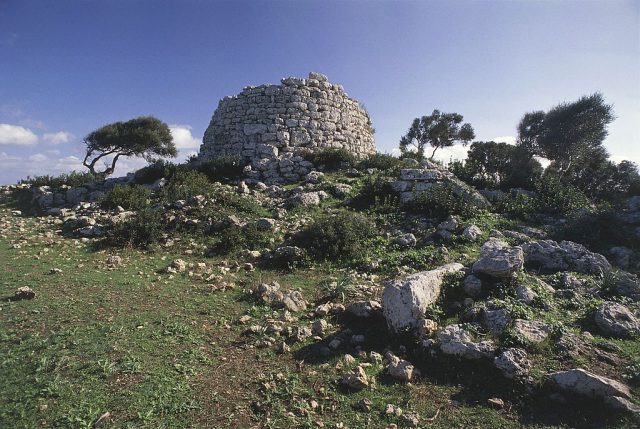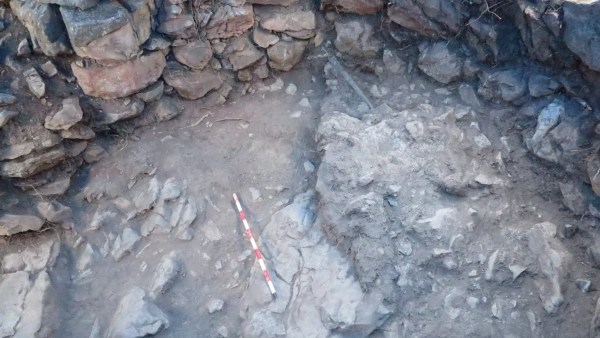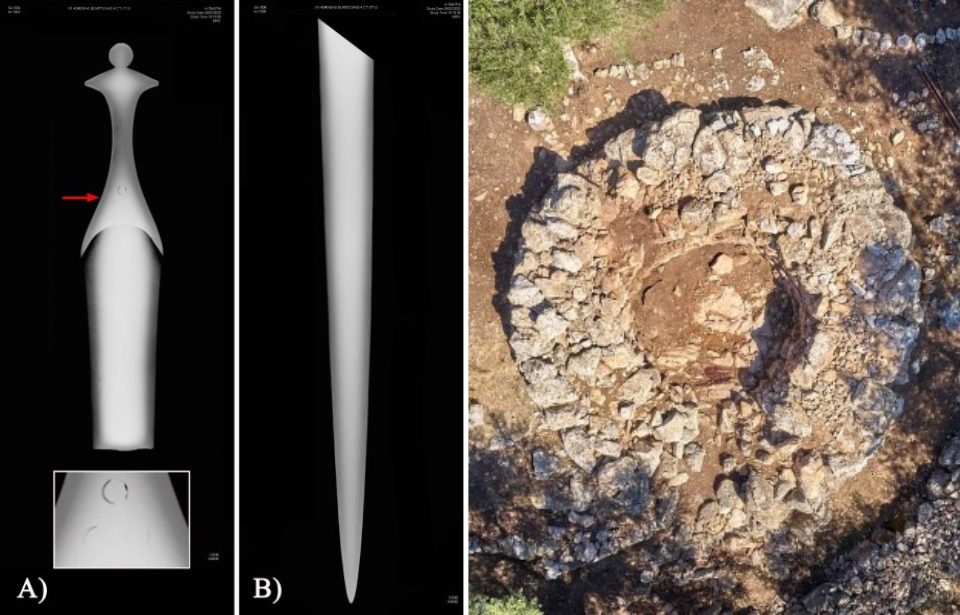Archaeologists with the University of Granada have released more information about the 2019 discovery of a Late Bronze Age sword on the holiday island of Mallorca. The findings will be published in the upcoming volume of the Journal of Archaeological Science: Reports.

The September 2019 excavation was led by Pau Sureda of Incipit-CSIC and done with the assistance of the University of Granada, the Archaeological Museum of Deià , and the University of the Balearic Islands. According to reports, the team was preparing the Serral de ses Abelles talaiot for a museum site when two archaeologists moved a rock and discovered the sword sticking out from the ground.
Talaiots are tower-like structures built by the Talaiotic people, whose culture flourished on Majorca and Menorca between 1,000 and 6,000 B.C. The Serral de ses Abelles talaiot overlooks the Puigpunyent valley in Mallorca, and is said to have once been linked to a large settlement that has since disappeared.

According to scientists, this specific site dates back to the 8th century B.C. Excavations first began in 1959, after archaeologist Guillermo Rosselló-Bordoy suggested the talaiot had been hollowed out by fire, a claim later confirmed via radiocarbon dating.
The secondary excavation in 2019 focused on a preserved area toward the north side of the chamber. As the site had been previously examined and looted by ancient societies, it was not expected that there was anything else to be located. As such, the sword’s discovery came as a surprise.

The sword is said to have been “perfectly preserved,” and is the only one of its type to be found in an archaeological excavation during the 21st century. There are only 19 similar swords known to exist, and the majority are fragmented and/or were located without an archaeological context.
The quality of this sword has allowed for a better understanding of the other swords to be developed. It shows them to have been emblematic elements, rather than functional weapons, as it was not worked for hardening, nor was its blade prepared.
More from us: Roman Statues Dating Back 2,000 Years Discovered in UK
Context has also been provided regarding the swords’ positions within the Balearic societies of the Late Bronze Age and the trade routes utilized in the Western Mediterranean.
